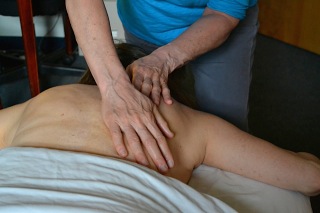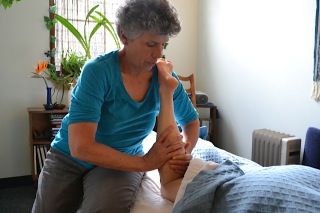UNPLUGGED? DIGITAL ADDICTION IS ATTRACTING ATTENTION

Unplugged Jeb Wallace-Brodeur; Winter hikers from Vermont unplugged as they descend from the summit of Mount Flume in New Hampshire’s White Mountains.
Time to deliver the mail, to deliver you on target in this new year and make the most of your time. Before we do that let’s take one step back and ask a key question. Could you go one day a week unplugged? That means not plugged into a device of any sort, but plugged into the moment, plugged into reality, instead of virtual reality. If the answer is no, you could not go a day without your device, maybe that is your new year’s resolution. To plug back into you and those around you!
If the answer is no, then let’s figure out why. Or, as this is a fitness article, let’s figure out if your devices are serving you or are you serving them? We know from brain imaging that a ping, ring or vibration for most people activates a dopamine squirt in the brain. Simply put, dopamine is a chemical created in your brain that is generally released and is associated with a reward response. However, too much “reward”, like too much of any good thing, can quickly become not a good thing. That is why we’re now seeing more and more digital addiction as devices surround us every day. Hence, the pressing need to unplug on a regular basis.
But let’s go back to the first sentence. Mail delivery; how does that relate to what the fitness world and to what marketers are calling wearables? Before wearables, we relied on training by feeling, or what exercise physiologists called RPE, rate of perceived exertion. There are a variety of RPE scales, 1-10 and 6-20 tend to be the most common scales used. The scales correlate on the lower ends with exercising easily, and as the scale progresses, exercise increases from moderate to hard at the top end of an RPE scale. Training by feeling is like delivering the mail to the right street. It generally gets you close to the destination of exercise that is on target.
One of the first wearables, in a consumer sense, is now known as the ubiquitous heart rate monitor (HRM). A heart rate monitor simply does that, measure your response to exercise, which is generally associated with an increase in heart rate as exercises becomes more difficult. Training by heart rate will show several patterns over time, but I would argue that training by heart rate is like delivering the mail to the right block on a street. It gets you close to the intended address, but not to the exact house all the time. The house you’re trying to deliver your mail to is the house that has the right intensity of exercise at the right time. The danger with heart rate training is generally most people just play the high heart rate Olympics, seeing how high they can get their heart rate up each workout. This isn’t a system that will support sustainable fitness. Rather it is a system that will ensure that the mail will get farther and farther away from the intended address as time goes on, farther from becoming a fit, happy and healthy person.
Perception and heart rate are fickle responses to a variety of stressors. They are affected by many variables. The key ones are generally sleep, nutrition, stress, hormonal variation and hydration. Often those five are interconnected. Each (and other “stressors”, including positive stressors) has an impact on perception and on heart rate. For example, if you haven’t slept enough or ate a big meal the night before exercise you might feel sluggish the next day. That means, what was an easy workout yesterday might feel hard the next day and your heart rate might be higher or lower than usual. Again, your fitness mail won’t be delivered to the right address and you won’t be making the most of your time.
That is where wearables and measurement come into play. Many of you likely received Fitbits, Garmins, Misfits or Jawbones (or one from a host of other companies), power meters or another type of GPS devices or apps over the holidays. Or you’ve already been using one or many of them. The real question is, are you using them or are they using you? Do you know what that data overload means and why you’re doing what you’re doing?
The key functions of devices like Fitbits (the most common wrist wearable) are to measure steps, purported calories (which in most cases when compared to lab results are highly inaccurate), heart rate, and sleep. There is other data you can mine from these devices, but those are likely the key metrics. A power meter (usually associated with cycling or rowing) measures watts – just like the power a light bulb uses. A power meter measures the power one produces while exercising. Finally, a GPS usually is used for outdoor exercise and measures pace per mile. In the very near future we will be potentially wearing oxygen measuring devices and accelerometers are already being used in the commercial marketplace to measure speed of movements.
Whatever device you’re using, the key becomes the use of the information to create positive change. If you’re not using the information (inferring meaning) and tracking progress then you’re likely using the wearable as a toy, a digital distraction that is eliciting a digital dopamine response. Some are calling this digital cocaine.
However, if you are using a wearable to create a better sleep pattern for example, or to increase your pace per mile, set steps goals every week, or increase your wattage output with the same or lower heart rate, then you are on the right path. If you are doing these things (or other strategically tracked and utilized metric), using the data to create change, then you are delivering your fitness mail to the right address every time you use your wearable or device. You are using a feedback loop called assessment (data) to inform instruction to create change. That change will be a newer, stronger, fitter, and faster you in the year ahead. And a smarter you by unplugging from your devices once a week and plugging into your life. Wishing you miles of safe smiles in 2016 and a fitness quest that is dialed in.
Joey Adams, M.S. Exercise Science, Intelligent Fitness, Metabolic Specialist, VO2 assessments and performance analysis. www.intelligentfitnessvermont.com
WHAT ARE WEARABLES? Fitness gadgets flood the market. Becoming more and more easily accessible, these gadgets run the gamut from Fitbits to power meters measuring everything from calories burned to oxygen processed.
You see them on your coworkers’ wrists. You wear them in your Spinning® class, on your cross country ski, even in the pool. You sleep in them at night to determine your resting heart rate and you check in with them to see how you’re feeling.
What we call wearables is high level technology that may even surpass that of computers and smart phones. Narrowing the topic to fitness, wearable tracking devices do just that, and more.
Of course there’s the element of GPS that can find your location, plot a course or record your travel. Fitness tracking devices can also give you immediate access to pace, speed, distance, time, altitude, heart rate, watts, calories and oh so much more.
Furthermore, this data can be uploaded to a computer program used to record and store workouts or compare with previous training sessions, assessment and sharing with others such as a coach or training partners or competitors.
Wearables, as opposed to hand-held or equipment mounted, come in a staggering variety of styles and models. The technology in each is similarly efficient and reliable. The difference is primarily one of individual needs and preferences.
For example, are you a runner, cyclist or swimmer? Do you want to record your effort during weight lifting of your heart rate in the pool? Do you want to know where you’ve been when snowshoe touring or where you need to go to find the next shelter on the Long Trail? Do you want alarms to notify you if you are leaving a training zone or reminders to get up out of your chair and move a bit? Are you fine-tuning your competitive performance or simply wanting the motivation to lead a more active daily life while you check to see how much you are sleeping? You could, after all, just be looking for a fitness watch as some new bling.
Yet wearables have stepped far outside the restrictions of watch design. Leading wearables include Jawbone, Garmin, Fitbit, Microsoft Band, Moov Now, Misfit and Polar. Wearables are found on wristbands, clip-ons, glasses, shoes, helmets and even socks that tell you when to buy new ones or headbands that interpret dreams.
For years runners have worn chips to clock their race time and other micro chips have been implanted in pets for identification.
Those uses are tame compared with some of the more weird devices such as Ping garments that allow social networking on Facebook, digital tattoos, pet pac collars that transmit bio data directly to the family veterinarian, and a tweeting bra that, yes, allows the wearer to use Twitter. (And we thought amazing the early tracking devices worn by seniors who tend to get lost.)
Mind you, I do not condemn the use of wearables. I confess that I am an athlete heavily reliant upon my heart rate monitor and power meter. Both have helped me train more effectively and given me confidence to push to the next level. Perspective, however, is an important tool in our training toolbox. Balance is, as always, imperative. Linda Freeman
These articles first appeared on the Active Vermont page of the Rutland Herald & Times Argus on January 29, 2016.














